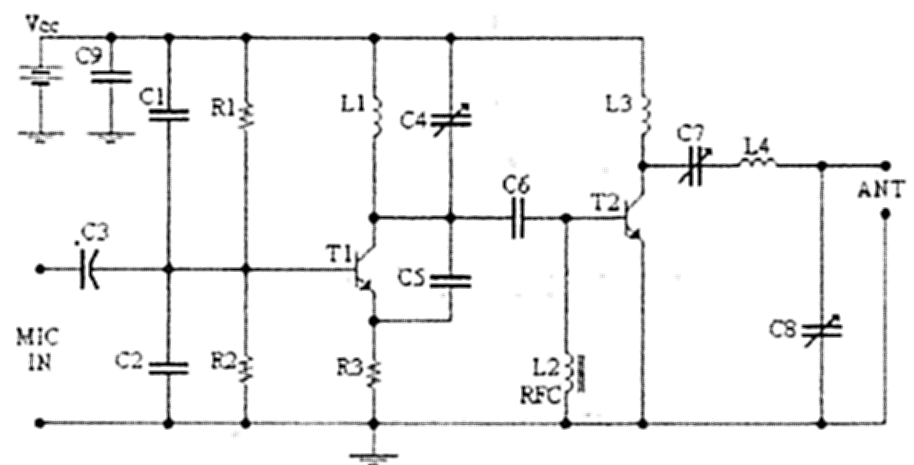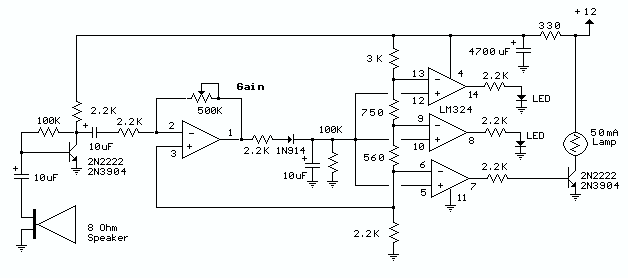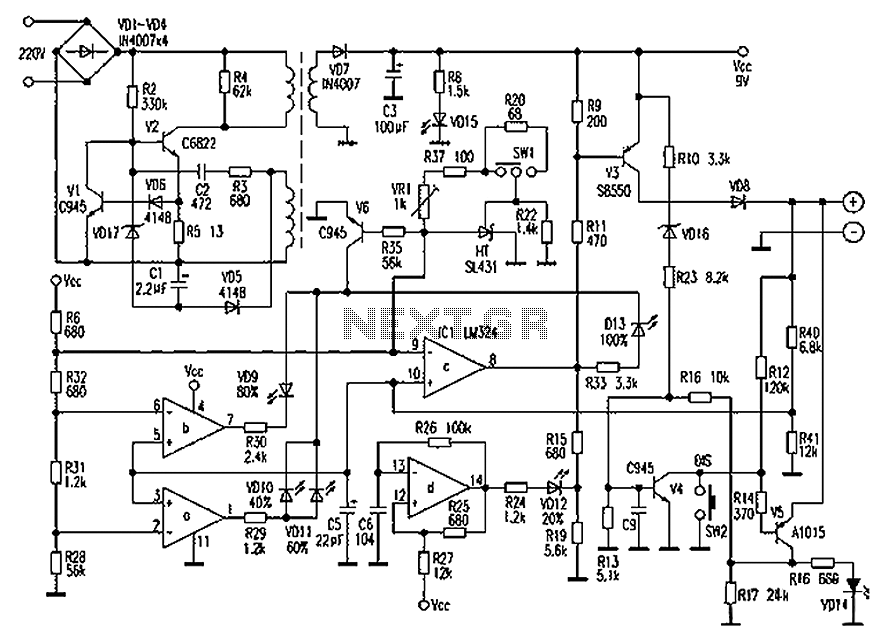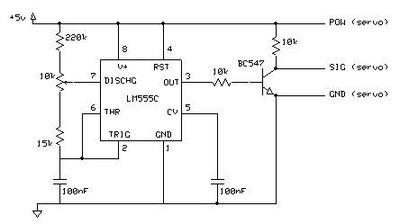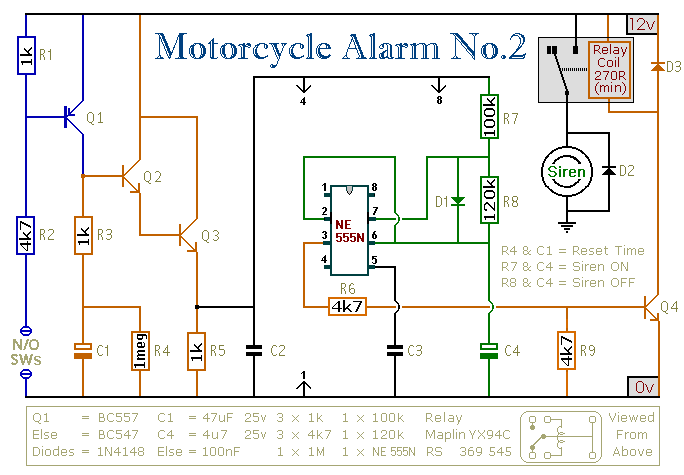
PTT Schematic

Most modern transceivers feature a built-in interface that functions effectively in digital modes; however, they often lack support for analog voice modes. For instance, Yaesu transceivers only allow the use of their internal interface when transmitters are set to Digital Mode. Commercial external interfaces typically cost 100 Euros or more, depending on additional features. Many amateur radio operators work with limited budgets, making a homebrew solution appealing. After exploring various interfacing methods, it was determined that using an optocoupler via a COM port is the most practical approach. The advantages of employing an optocoupler in this project are evident: it reduces the total number of components and provides electrical isolation between the transceiver and the computer, resulting in a total interface cost of less than 5 Euros, a significant savings compared to commercial options. The voltage levels on these lines range from -12V/-5V to +12V/+5V, allowing an optocoupler to effectively manage communication between the transceiver and the computer. The interface is essential for enabling the computer to send commands to the transmitter for transmitting or receiving. The most efficient method utilizes a serial COM port through the RTS or DTR lines, which activate the PTT (Push to Talk) function on the transmitter. Analog audio is transmitted from the sound card directly to the audio input of the transceiver via a simple cable connection. The circuit described is designed to connect the computer to the transmitter with minimal components. When the program activates the RTS (or DTR) line, the negative voltage shifts to positive, illuminating LED D1 and the LED in the optocoupler U1. This action allows current to flow between the emitter and collector of the optocoupler, providing the necessary ground for the transmitter to enter TX mode. While LED D1 is not essential for circuit operation, it serves as a useful visual indicator of the interface status. An enhancement to this basic interface involves replacing the LED with a dual-polarity LED, which indicates standby (RX) mode in green and switches to red during TX.
The described circuit for interfacing a computer with a transceiver employs an optocoupler to achieve electrical isolation and reduce component count. The connection utilizes a standard serial COM port, specifically leveraging the RTS or DTR lines to control the PTT function of the transmitter. The optocoupler, designated as U1, plays a critical role in isolating the computer's circuitry from the transceiver, protecting both devices from potential electrical interference or damage.
The circuit design begins with the COM port output, where the RTS line is used to signal the transceiver. When the software activates this line, it transitions from a negative voltage state to a positive voltage state. This change triggers the optocoupler, allowing current to flow from its emitter to collector. The incorporation of LED D1 provides a visual feedback mechanism, indicating the operational status of the interface. In its upgraded form, the dual-polarity LED enhances usability by providing clear visual cues for both RX and TX states.
Analog audio signals from the computer's sound card are routed directly to the transceiver's audio input, ensuring a straightforward connection that minimizes additional components. The design prioritizes simplicity and cost-effectiveness, making it an ideal solution for amateur radio operators seeking an affordable method to integrate their computers with existing transceiver technology. Overall, this circuit exemplifies an efficient and practical approach to enhancing communication capabilities in amateur radio setups.Most modern transceivers have a built in interface. These interfaces work well in digital modes, but seem to lack support in analog voice modes. A case in point is the Yaesu transceivers that only permit the use of their internal interface when the transmitters are set to Digital Mode . Commercial external interfaces cost 100 Euro or more, depending on the additional futures. Due to the fact that most ham operators are on a limited budget, a homebrew approach is attractive. After examining various ways to interface the transceiver, it was found that the most practical way was using an Optocoupler via a COM port. The gain of using an Optocoupler in this project is obvious. First of all, the total number of components is reduced, and the electric isolation between the transceiver and the computer is achieved.
Last but not least, the total cost of the interface is less than 5 Euro -quite a difference compared to the prices of the commercial interfaces available. The voltage swing on these lines is -12v/-5v through +12v/+5v, so a Optocoupler can handle quite nicely the negotiation between the rig and the computer.
The interface is needed so the computer can send a request to the transmitter to transmit or receive. The most practical method is via a serial COM port using the RTS or DTR lines. Through these lines the PTT (Push to Talk) on the transmitter is activated. The analog audio is passed from the sound card directly to the audio in of the transceiver by simple cable connection.
The circuit described below was made to connect the computer to the transmitter. It was designed as simple as possible to keep the number of components as low as possible. As soon as the program activates the RTS line (or the DTR) the negative voltage of the line turns to positive. This makes the Led D1 as well as the Led in the Optocoupler U1 to light, making the emitter and the collector of the Optocoupler to conduct, thus giving the ground needed to the transmitter to TX.
The Led D1 is not necessary for the circuit to work but it is a very useful visual indication of the status of the interface. An upgrade to this simple interface was to replace the Led with a dual polarity Led. This way, instead of having the led light up on TX, the led is green on Stand by (RX) and turns Red on TX.
🔗 External reference
The described circuit for interfacing a computer with a transceiver employs an optocoupler to achieve electrical isolation and reduce component count. The connection utilizes a standard serial COM port, specifically leveraging the RTS or DTR lines to control the PTT function of the transmitter. The optocoupler, designated as U1, plays a critical role in isolating the computer's circuitry from the transceiver, protecting both devices from potential electrical interference or damage.
The circuit design begins with the COM port output, where the RTS line is used to signal the transceiver. When the software activates this line, it transitions from a negative voltage state to a positive voltage state. This change triggers the optocoupler, allowing current to flow from its emitter to collector. The incorporation of LED D1 provides a visual feedback mechanism, indicating the operational status of the interface. In its upgraded form, the dual-polarity LED enhances usability by providing clear visual cues for both RX and TX states.
Analog audio signals from the computer's sound card are routed directly to the transceiver's audio input, ensuring a straightforward connection that minimizes additional components. The design prioritizes simplicity and cost-effectiveness, making it an ideal solution for amateur radio operators seeking an affordable method to integrate their computers with existing transceiver technology. Overall, this circuit exemplifies an efficient and practical approach to enhancing communication capabilities in amateur radio setups.Most modern transceivers have a built in interface. These interfaces work well in digital modes, but seem to lack support in analog voice modes. A case in point is the Yaesu transceivers that only permit the use of their internal interface when the transmitters are set to Digital Mode . Commercial external interfaces cost 100 Euro or more, depending on the additional futures. Due to the fact that most ham operators are on a limited budget, a homebrew approach is attractive. After examining various ways to interface the transceiver, it was found that the most practical way was using an Optocoupler via a COM port. The gain of using an Optocoupler in this project is obvious. First of all, the total number of components is reduced, and the electric isolation between the transceiver and the computer is achieved.
Last but not least, the total cost of the interface is less than 5 Euro -quite a difference compared to the prices of the commercial interfaces available. The voltage swing on these lines is -12v/-5v through +12v/+5v, so a Optocoupler can handle quite nicely the negotiation between the rig and the computer.
The interface is needed so the computer can send a request to the transmitter to transmit or receive. The most practical method is via a serial COM port using the RTS or DTR lines. Through these lines the PTT (Push to Talk) on the transmitter is activated. The analog audio is passed from the sound card directly to the audio in of the transceiver by simple cable connection.
The circuit described below was made to connect the computer to the transmitter. It was designed as simple as possible to keep the number of components as low as possible. As soon as the program activates the RTS line (or the DTR) the negative voltage of the line turns to positive. This makes the Led D1 as well as the Led in the Optocoupler U1 to light, making the emitter and the collector of the Optocoupler to conduct, thus giving the ground needed to the transmitter to TX.
The Led D1 is not necessary for the circuit to work but it is a very useful visual indication of the status of the interface. An upgrade to this simple interface was to replace the Led with a dual polarity Led. This way, instead of having the led light up on TX, the led is green on Stand by (RX) and turns Red on TX.
🔗 External reference
